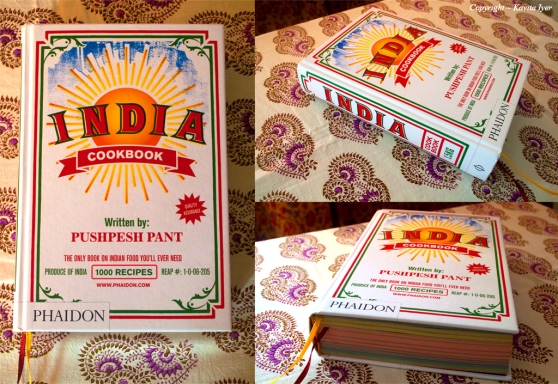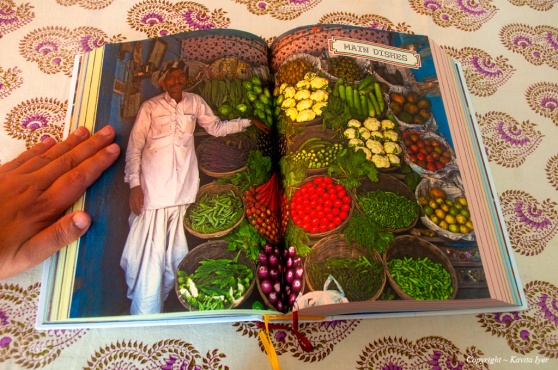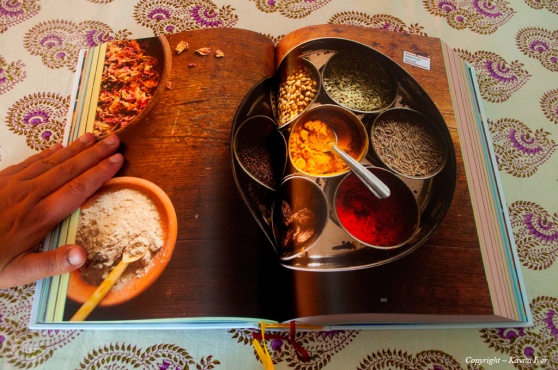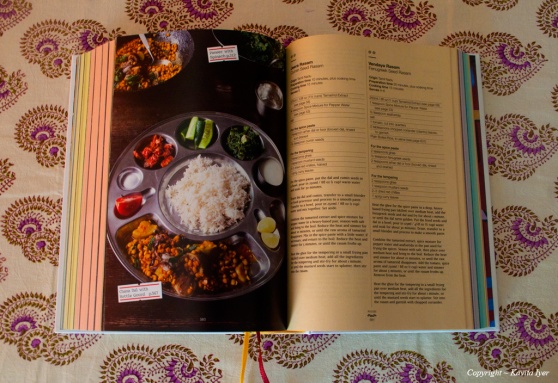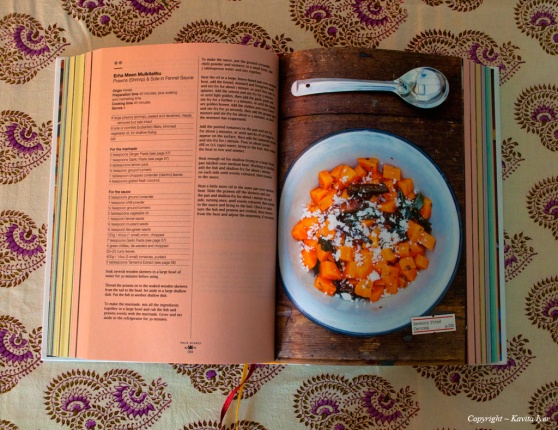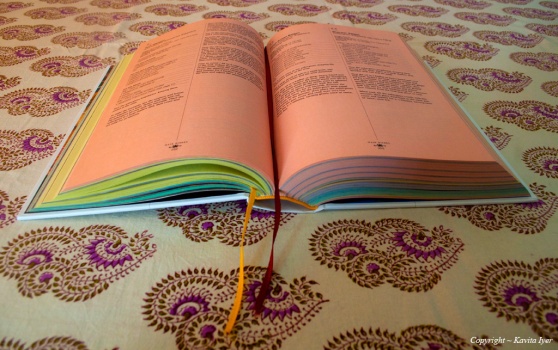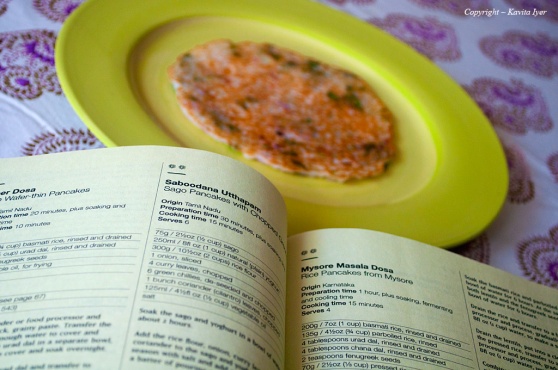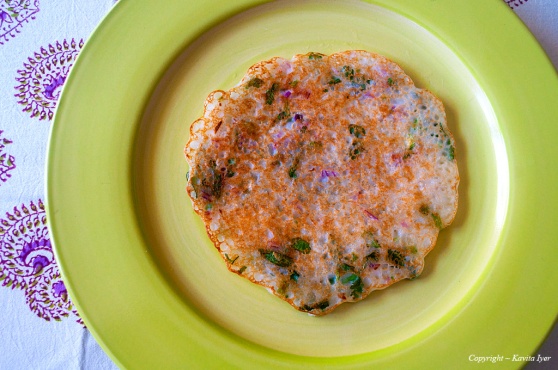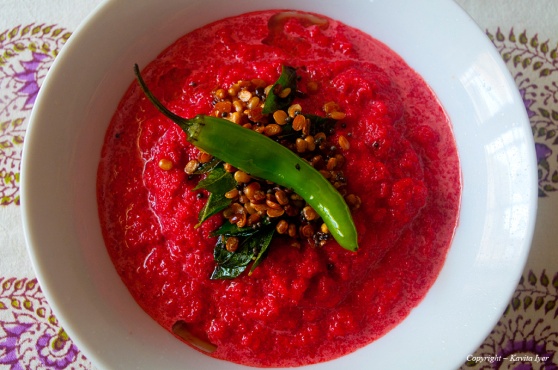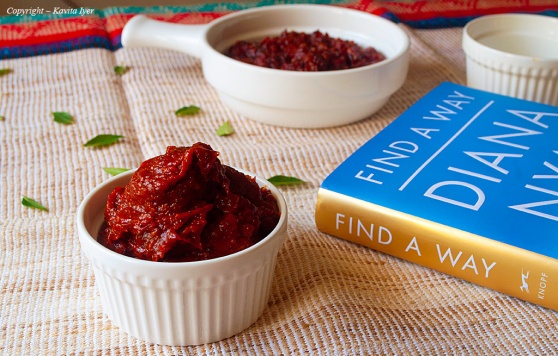
Did you know that the cooking process increases the antioxidant activity in tomatoes, which can offer you many health benefits? Cooked tomatoes are low in calories and fat and supply you with a good dose of protein and fiber. Tomatoes contain a good dose of vitamin C and iron too, that the cooking process doesn’t destroy. So if a juicy slice of fresh tomato is your idea of a tasty and nutritious snack, consider adding cooked tomatoes to your diet as well.
Fresh, locally grown tomatoes are one of summer’s greatest gifts. I for one, as soon as summer starts, go to the local market where the freshest produce comes from the nearby farms and pick up the juiciest luscious blood-red ripe tomatoes to make my very own tomato preserve, which in Tamil (where it originates from) is known as Thakkali Thokku. Thakkali means Tomato and Thokku means Preserve.
This tangy, spicy and a wee bit bitter-sweet preserve can be used as a spread on your toast or as chutney with idlis, dosas, pancakes or as a pickle with parathas or even as a rice mix to make delicious tomato rice. The luscious ripe tomatoes lend their tanginess to this preserve while the red chillies make it spicy; curry leaves add their freshness and aroma to it; while mustard and fenugreek seeds give it a slight bitter after taste and natural organic jaggery adds a hint of sweetness to it.
Although the ingredients are simple, this preserve needs a lot of patience and love, as do all good things in life. It takes almost three hours of constant monitoring for the juice of the tomatoes to dry up into this thick glossy preserve. I cannot describe the heady aroma that wafts through the house as soon as you start cooking and you start salivating inadvertently. You have to experience it to believe it. This Tomato Preserve will last you for atleast a fortnight; it needs to be stored in an air-tight container (preferably glass) and refrigerated properly.
Here’s presenting my first batch of special tomato preserve this summer and its recipe:
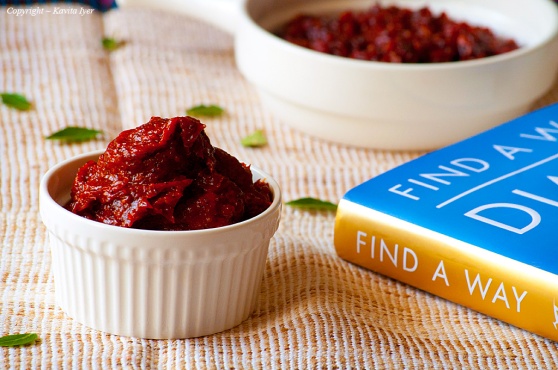
TOMATO PRESERVE
Origin: Tamil Nadu
PREP: 30 mins PLUS COOLING TIME COOK: 2 1/2 HOURS TOTAL: 3 hourS
INGREDIENTS:
2 kg ripe organic tomatoes (roughly chopped)
2 tablespoon mustard seeds
2 tablespoons fenugreek seeds
5-6 sprigs curry leaves
5-6 red chillies
1 tablespoon chili powder
1 cup organic jaggery powder/wet jaggery
Salt to Taste
Cold Pressed Coconut Oil for Tempering

DIRECTIONS:
Wash and chop the tomatoes roughly.
Take a skillet/kadhai with a thick bottom and put it on the gas on medium flame. Add three tablespoons of coconut oil. Once the oil is hot add the mustard seeds. Let them splutter. Then add the fenugreek seeds and the curry leaves. Roast for the next 2-3 minutes or until you get the bitter sweet aroma from them.
Add the chopped tomatoes and the whole red chillies. Cover with a lid and let it simmer for approximately one and a half hour or until the juice of the tomatoes reduces to half. Keep checking and stirring the mixture intermittently.

Reduce the flame to low and then add the jaggery, chilli powder and salt. Mix it and again cover the skillet with the lid and let it cook for atleast 45 mins to one hour until the mixture thickens and the juice of the tomatoes dries completely. This time around, keep checking and stirring every five minutes otherwise there are chances that it might burn at the bottom.

Once done let the mixture cool down completely. Then blend it to a paste in a blender or food processor.

The preserve is ready. Don’t forget to store it in an air tight glass container and refrigerate it.
Hope you try this delicious and nutritious Tomato Preserve and love it as much as we do.
Cheers.

